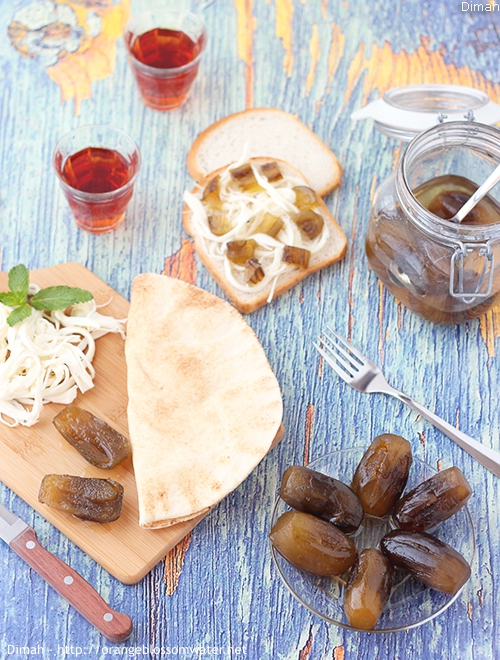Mrabba Al-Bathenjan
November 25th, 2016
This post is related to : Typical Syrian Breakfast
Have you ever thought about making eggplant into Jam? Mrabba Al-Bathenjan (Eggplant Jam) is very popular in Syria. You would be surprised how delicious it is. Today I’ll share the recipe of Eggplant Jam of Hama, and next post will be “Mrabba Al-Bathenjan Al-Halabi” which is the recipe of Aleppo.
Let’s make Mrabba Al-Bathenjan:
Pineapple Upside Down Bundt Cake
November 4th, 2016
This cake looks beautiful and super easy to make.
Let’s make Pineapple Upside Down Bundt Cake:
To Aleppo With Love – Ghraibeh Bel-Fustuq Al-Halabi
October 31st, 2016

The Syrian pistachio tree is known since Assyrians age. The origin of this tree goes back to Al-Batim Tree in the Mediterranean sea basin and Middle East regions; however, the original place of the Syrian pistachio is Syria (Ein Al-Tina). Many references refer to this kind as (Pistachio – Pistacia vera L.) known since 3500 years BC in West Asia and “Great Syria” countries. The Aleppo pistachio is attributed to Aleppo city which is the traditional area for planting this tree since long ages; therefore, whenever Aleppo city is mentioned, we have to mention the Aleppo pistachio (Fustuq Halabi). In Aleppo, the pistachio blossomed producing a dozen varieties, a unique diversity. These varieties differ both in the color and the size of the fruit on the tree. As the taste and scent, the soil and position of the trees provide the variations. Pistachio is important ingredient in the traditional cuisine of Aleppo.
Ghraibeh is a shortbread type biscuit, and today’s recipe is Ghraibeh Bel-Fustuq Al-Halabi (Pistachio Ghraibeh) which is similar to original Ghraibeh but made with pistachio.
Let’s make Ghraibeh Bel-Fustuq Al-Halabi:
To Aleppo With Love – Za’atar Halabi
September 30th, 2016
Aleppo is the famous city of Za’atar, one of the most important blend of any Syrian home’s pantry.
Aleppian Za’atar has a different element from other neighboring countries. It is based on mixture of crushed spices and roasted nuts mixed with sumac and toasted sesame seeds. The blend of ingredients varies from one spice dealer, or ‘Attar to another.
Za’atar Halabi is usually prepared in September, and because it is widely available commercially people do not bother making it at home. In Aleppo, people used to buy Za’atar from Al-Madina Souq which is now destroyed and burnt as result of the war.
Za’atar Halabi is always a part of Syrian breakfast table. It is eaten by dipping a piece of bread in olive oil first then dipping it in Za’atar. Za’atar Halabi is not used for manakish (only Jordainen, Palestenian, and Lebanese Za’atar are used for manakish).
Let’s make Za’atar Halabi:
Eid Al-Adha, Sweets – 2016
September 17th, 2016
This post is about sweets I prepared for Eid Al-Adha.
Read the Archive:
More pictures with details:




